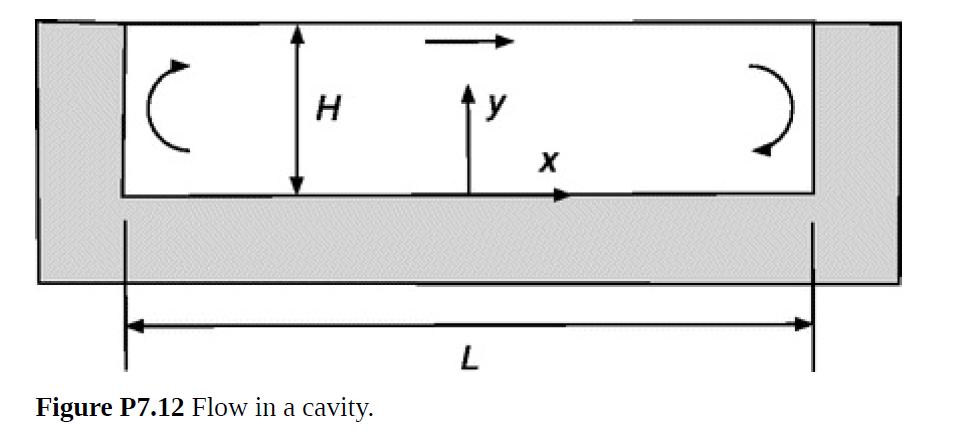Suppose that a long and shallow cavity of length L and depth H is filled with liquid,
Question:
Suppose that a long and shallow cavity of length L and depth H is filled with liquid, as in Fig. P7.12. If something at the top surface causes the liquid there to move from left to right (i.e., if vx > 0 at y = H), a circulating flow is created, as indicated by the arrows. However, if L⁄H is large enough, the flow in the central region will be fully developed. This problem focuses on that region, centered on x = 0, where vx = vx(y).
(a) By choosing an appropriate control volume, show that vx averaged over the depth of the cavity must be zero for all x.
(b) Determine vx(y) for the case in which the top surface is a solid plate sliding past the cavity at velocity U in the +x direction.
(c) Suppose now that y = H is a gas–liquid interface at which the temperature varies as

and that the temperature-dependence of the surface tension is described by
where β > 0. Assuming that viscosity variations are negligible, determine vx(y) for this case. If ΔT = TL − T0 > 0, will the circulation be clockwise or counterclockwise? This is an example of a Marangoni flow.
Step by Step Answer:

Introduction To Chemical Engineering Fluid Mechanics
ISBN: 9781107123779
1st Edition
Authors: William M. Deen





